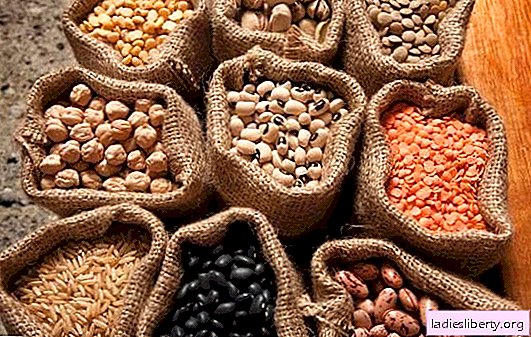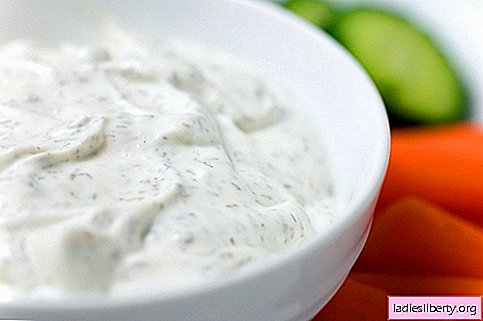
Magnesium is a healthy heart, blood vessels, nerves, circulatory and genitourinary system. Without this substance, the normal course of metabolic processes is impossible. Knowing which foods contain magnesium the most, you can saturate the body with this essential substance to a sufficient extent.
How much magnesium does the body need per day
Scientists have found that an adult needs to receive from 300 to 500 mg of magnesium per day. In vitamin complexes, as a rule, contains 25% of the daily intake. Everything else must be taken with food. And if, for some reason, taking pharmacy vitamins is impossible, then you need to seriously deal with the organization of your diet.
The rate of magnesium per day increases if a person is involved in sports, fitness, hard physical or intense mental work. Constantly fill the deficiency of the most important substance and those who regularly drink. Alcohol flushes magnesium out of the body.
Magnesium deficiency is experienced by all residents of megacities and industrial cities with low ecological culture. Fans of strict diets and all those who eat improperly or experience constant stress at work or at home need regular filling of the micronutrient deficiency.
Magnesium record holders
What foods contain the most magnesium? Scientists have long calculated the content of this substance in different food groups and found out the following. Unconditional record holders - cereals, nuts and legumes.
Cereal crops - this is not only wheat, rye, oats, but also bran. Most of all magnesium in rice bran: 780 mg, that is, twice as much as the daily allowance. Another question is whether it will be possible to buy such a useful, but rare product for Russian supermarkets.
It can be successfully replaced by wheat bran more familiar to Russians: they contain 448 mg per 100 grams of product. This is also more than the average daily norm by 12%. It is clear that eating so much bran during the day is difficult, but nevertheless it is very useful to include the product in food.
In addition, bran carbohydrates are safe for the figure. Unlike cereals, bran passes through the gastrointestinal tract in transit and is not stored in fat.
From other cereal crops, you can make such a rating:
• sprouted wheat 400 mg;
• brown rice 177 mg;
• buckwheat 200 mg;
• rye 120 mg;
• oatmeal 116 mg;
• millet groats 83 mg.
It is no coincidence that cereals are recommended to be eaten for breakfast in order to organize proper nutrition. Magnesium from cereals is absorbed best, is in perfect balance with such important trace elements as calcium and phosphorus. A plate of oatmeal, buckwheat or millet in the morning - evil longevity, health, excellent digestion.
It is useful to eat a piece of rye or bran bread and add wheat seedlings to salads. Germinated cereal greens are a good combination of magnesium and potassium. It gives the body incredible vigor and powerful life resources.
Nuts also extremely rich in magnesium. But in the first place - pumpkin seeds. They have 592 mg per 100 g, almost 150% of the daily norm. In second place are sesame seeds (540 mg) and sunflower seeds (317). 250 mg in pine nuts, 234 mg in almonds, 240 mg in cashews, 200 mg in pistachios, and 180 mg in peanuts.
Legumes - A wonderful source of magnesium. Most of all the substance contains soy - 226 mg per 100 g of weight. In peas, 107 mg, in corn 104, in beans 103 mg, in lentils 80 mg. The only drawback of beans is the violent reaction of the intestines. To avoid increased gas formation, bean cultures must be soaked before cooking.
Magnesium in plant foods
Among the plant products that we traditionally eat, seaweed occupies a well-deserved place of honor. It has 170 mg of magnesium - almost half of the daily norm. Algae is delicious in salads, they can be combined with nuts and other healthy products: fresh vegetables, eggs.
Very useful for filling the deficiency of magnesium dried apricots (105 mg) and prunes (102 mg). Dried fruits can be added to baked goods, salads, boiled compotes or just like that, instead of sweets. Eat dates - they have almost 79 mg of magnesium.
It is worth taking into account the large amount of magnesium in the following plant products:
• spinach 82 mg;
• persimmon 56 mg;
• arugula 47 mg;
• banana 42 mg;
• raisins 42 mg;
• green peas 38 mg;
• blackcurrant 31 mg;
• avocado 29 mg;
• carrots 26 mg;
• potatoes 23 mg;
• raspberries 22 mg;
• beets 22 mg;
• beet tops 9 mg;
• cabbage 16 mg;
• watermelon 12 mg;
• cucumbers 14 mg.
Do not forget about garden herbs, in which magnesium is contained in large quantities. Add dill (70 mg), parsley (85 mg), basil (64 mg) to your food. Try to eat as much fresh greens as possible; in season, put it in soups, pastry toppings, salads, main dishes, snacks. Be sure to buy cheap greens in the fall (if you don’t have your own garden) and freeze for the future. In the winter months, this will help maintain the body, save from a deficiency of vitamins and minerals.
Magnesium in animal products
Animal food can also be an excellent source of magnesium. Of course, getting it is more difficult, you will have to devote more time to cooking. But such dishes give satiety, provide the body with protein for building muscles and connective tissue.
Let's look at which foods have the most magnesium. In the first place - seafood and fish. Try to introduce squid into your diet. They are inexpensive, they are prepared simply, they allow you to cook many delicious and simple dishes. 100 grams of this product contains 90 mg of magnesium. This is more than in lentils or millet. Cook squid for salad, stuff it for main dishes.
In second place is such a popular product as shrimp. They are perfect as a light meal or a component of a delicious salad, fried sea cocktail, light soup. In shrimp, 60 mg of magnesium is an impressive amount, quite comparable to millet cereal, a record product from cereals.
Be sure to include fish in your diet. And in inexpensive Russian varieties you will find a huge amount of magnesium: in pollock 55 mg, in pink salmon and herring 30 mg, in salmon and carp 25 mg.
In second place in importance - dairy products and milk. Be sure to eat natural cheeses. Semisolid grades contain 35 mg of magnesium. In the cottage cheese of this substance 23 mg, in natural yogurt 15 mg, in milk and kefir 14 mg, and in sour cream - 9 mg.
Meat and offal are traditional for Russian cuisine. You can also get enough magnesium from meat dishes. In beef it is 27 mg, in pork almost as much - 26 mg, in the kidneys and liver, respectively, 22 and 18 mg. Chicken meat contains up to 18 mg of the substance. Cutlets, soups, fries, meat fillings for pies and fillers for cereals - an ideal way to make the diet not only healthy, but also tasty.
Of the animal products, the least magnesium in the eggs is only 12 mg. Cook steam omelettes, poached eggs, cook hard-boiled and soft-boiled.
Knowing which foods contain magnesium the most, it’s easy to make a good family diet. Plan every day to diversify your table and provide a healthy diet for your entire family.











